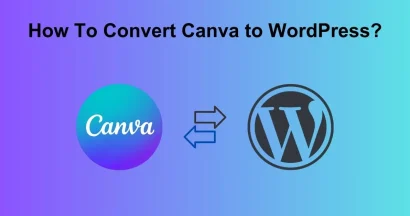Did you know that 71% of employers prioritize a designer’s portfolio over their resume when making hiring decisions? When potential clients or employers consider a graphic designer, they don’t just look at credentials—they look at visual proof of creativity, skill, and experience.
A graphic design portfolio is more than a collection of work; it’s your brand, a showcase of your best projects that can make or break career opportunities. But what separates an average portfolio from one that lands top-tier jobs?
In this guide, we’ll explore everything you need to know about building a standout graphic design portfolio to elevate your design career.
Let’s dive into the key steps to crafting a portfolio that gets noticed—and gets you hired.
Eduma – Education WordPress Theme
We provide an amazing WordPress theme with fast and responsive designs. Let’s find out!
What Is a Graphic Design Portfolio?
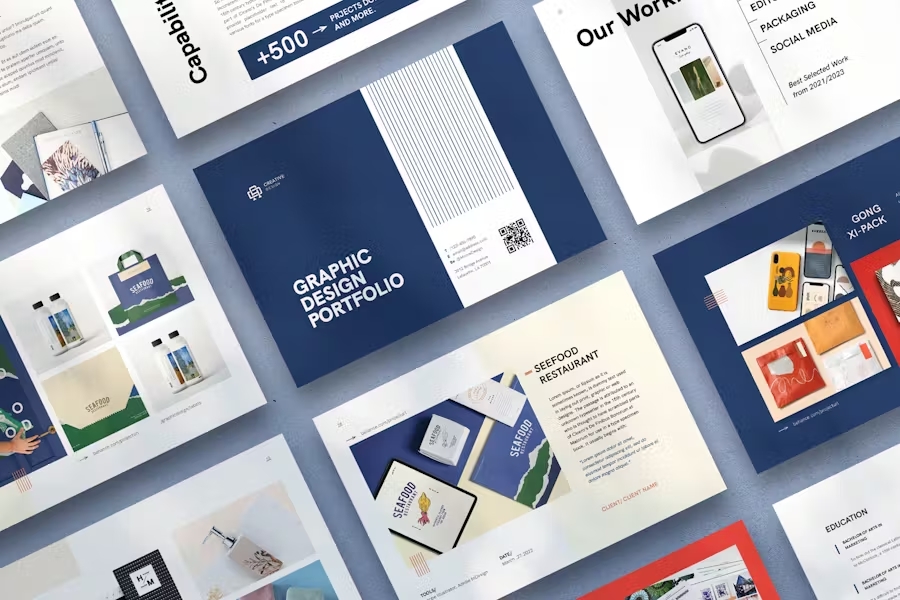
A graphic design portfolio gathers a designer’s top projects, demonstrating their abilities and unique style. This usually means showing finished work, detailed project breakdowns, and personal pieces that prove their skill in areas like branding, drawing, text design, website creation, and other design fields.
A good portfolio proves a designer can solve problems and think creatively, which helps clients or employers judge their suitability. You can show this work as a website, a digital document, or a physical book, depending on who will see it and why.
What Should Be Included in a Graphic Design Portfolio?
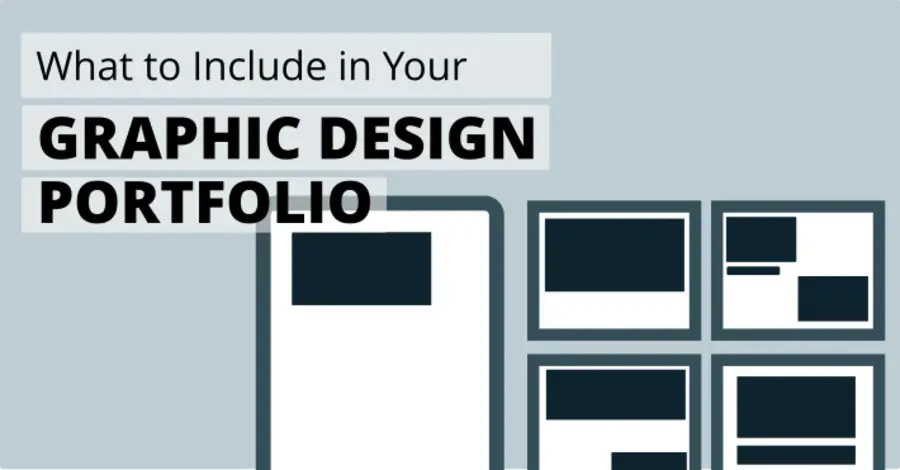
Here’s what a standout graphic design portfolio should include:
- Best Work Selection: A curated collection of the designer’s most impressive and diverse projects, highlighting their versatility and expertise.
- Professional Client Samples: Examples of work completed for clients, demonstrating the designer’s ability to deliver high-quality results in a professional setting.
- Design Process Insights: A glimpse into the designer’s creative process, showcasing their problem-solving skills and approach to design challenges.
- Industry Specializations: Emphasis on specific areas of expertise, such as logo design, web design, or motion graphics, to attract clients seeking those specific skills.
- Unique Style Expression: A cohesive visual identity that reflects the designer’s style and sets them apart from others in the field.
- Contact Information: Displayed contact details, making it easy for potential clients or employers to get in touch.
- Case Studies (Optional): Detailed explanations of selected projects, outlining the design objectives, challenges, and solutions.
- Additional Elements (Optional): Depending on the designer’s focus, they may include motion graphics, videos, illustrations, animations, product designs, UX designs, ad campaigns, storyboards, or brand identity work.
Today, most graphic design portfolios are presented as websites, offering a dynamic and interactive platform to engage viewers.
These websites not only serve as a connection point for clients but also help designers build online communities and expand their reach.
Tips To Create a Graphic Design Portfolio
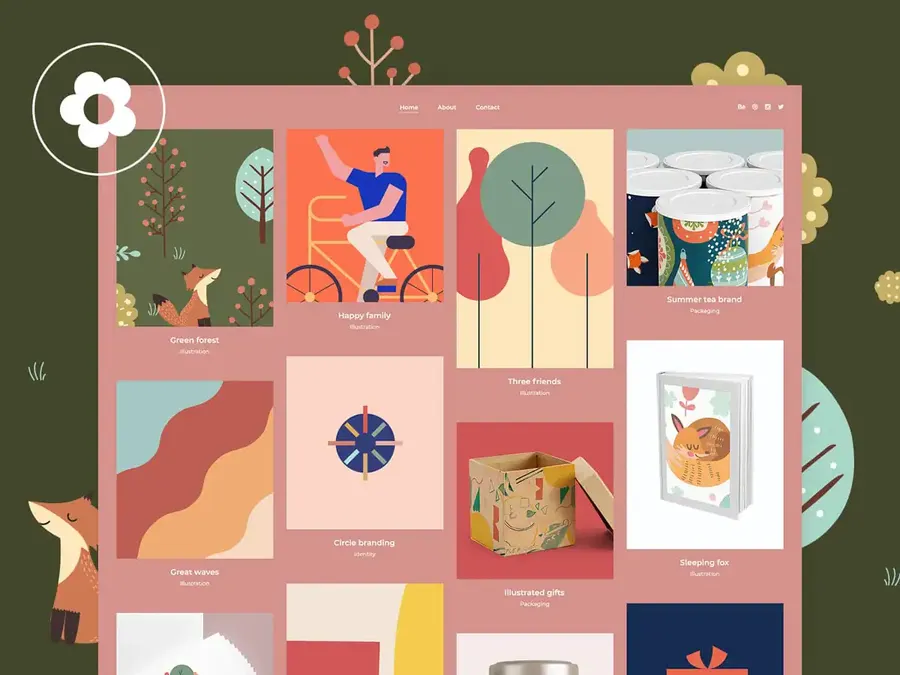
Creating a memorable graphic design portfolio requires showcasing your versatility and top-notch work while maintaining a user-friendly format.
Here’s how to make yours shine:
- Highlight Your Range: Include diverse projects from various industries, tailoring your selection to each client’s niche. Demonstrate your full skill set, whether it’s logo design, book layouts, or motion graphics.
- Quality Over Quantity: Focus on your most outstanding pieces that truly exemplify your strengths. Aim to create projects that highlight multiple skills, such as incorporating hand lettering into a poster.
- Tell a Story: Share case studies that illustrate your problem-solving process. Start with the client’s challenge, detail your approach and creative development, and showcase the final successful outcome.
- Keep It Simple: Whether printed or online, ensure your portfolio is easy to navigate. Prioritize clarity and accessibility over complex design elements, especially for websites. A client should never have to “hunt” for your work.
- Easy Contact: Prominently display your up-to-date contact information on your website or materials. Regularly check that links and forms are functioning correctly.
- Let Your Style Shine: Infuse your portfolio with your unique personality and perspective. Make deliberate design choices, be it in typography or color, to create a portfolio that is unmistakably yours.
How to Create a Graphic Design Portfolio
Ready to showcase your work online? Here’s a comprehensive guide to creating your graphic design portfolio, drawing inspiration from top examples and expert advice.
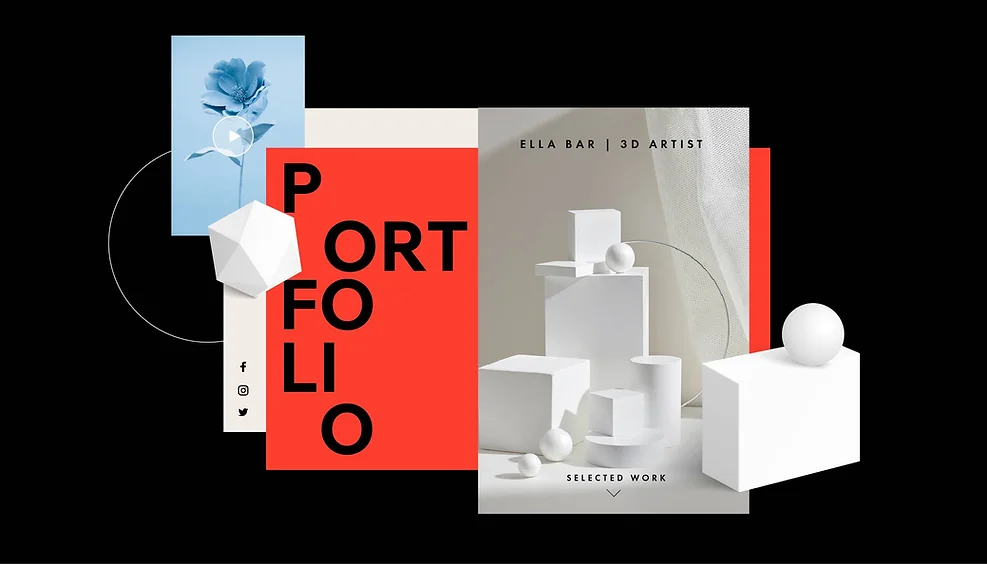
Step 1. Select Your Portfolio Website Builder
Choose a website builder that aligns with your technical skills and budget. Many portfolio website builders like Wix, SquareSpace, and WordPress.com offer user-friendly drag-and-drop interfaces and customizable templates specifically designed for portfolios.
If you decide to choose WordPress, then our article Create a Portfolio Website with Ease: Step-by-Step can help.
Step 2. Choose a Graphic Design Portfolio Template or Design Your Layout
Opt for a template that resonates with your style, or create a unique layout from scratch. Consider symmetrical or asymmetrical layouts depending on your desired visual effect.
Step 3. Secure Your Domain Name
A personalized domain name adds professionalism and makes your site memorable. Consider using your name or a relevant phrase.
Step 4. Curate Your Best Work
Select a concise collection of your most outstanding projects that showcase your versatility and expertise. Quality over quantity is key.
Step 5. Upload High-Quality Images
Ensure your visuals are sharp and well-lit. Invest in professional photography or use high-resolution images taken with a modern smartphone.
Step 6. Write Compelling Descriptions
Provide context for each project by detailing the medium, date, client (if applicable), and your creative inspiration. Add alt text to images for accessibility and SEO.
Step 7. Infuse Your Personal Brand
Customize your template’s color scheme, fonts, and imagery to reflect your unique style and personality.
Step 8. Optimize Navigation
Incorporate a user-friendly menu to guide visitors through your portfolio, CV, and contact information. Prioritize the pages you want to highlight.
Step 9. Share Your Story
Include an About page featuring your bio, CV, and other relevant details. Consider adding personal touches to connect with your audience.
Step 10. Publish and Promote
Once your portfolio is polished, share it across your personal and professional networks, including social media platforms.
5+ Best Graphic Design Portfolio Website Examples
To ignite your creativity and guide your portfolio’s creation, let’s explore these inspiring graphic design portfolio examples.
Whether you’re a seasoned professional or just starting, you’ll find valuable takeaways from these diverse showcases.
Jessica Walsh
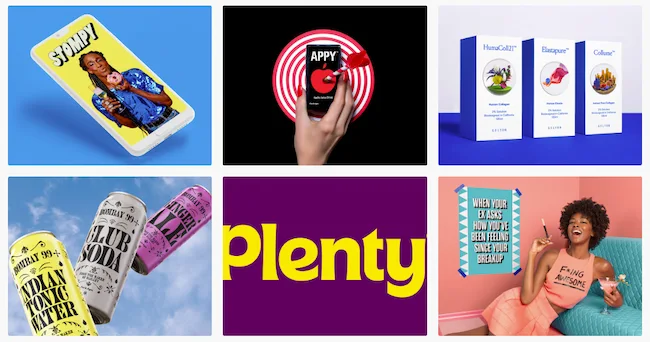
A master of eye-catching imagery and typography, Jessica Walsh‘s Behance portfolio highlights her bold and innovative style.
Her work, which has attracted clients like Apple and Levis, exudes vibrant colors, expressive photography, and a masterful use of negative space.
Morag Myerscough
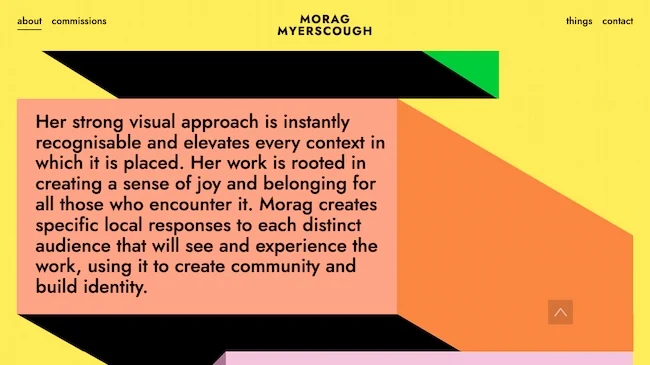
Morag Myerscough‘s portfolio is a visual feast of bright graphics, animations, and clean design.
It perfectly reflects her artistic approach and showcases her experimental projects, making it ideal for designers with a strong visual brand.
Heather Shaw
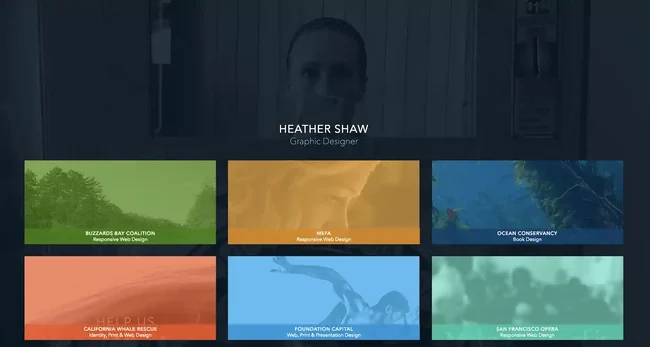
Heather Shaw‘s website is a model of clarity and navigation. It showcases her versatility across book design, branding, and websites while maintaining visual consistency.
Informative project descriptions enhance the user experience and encourage further exploration of her work.
Mike Mills
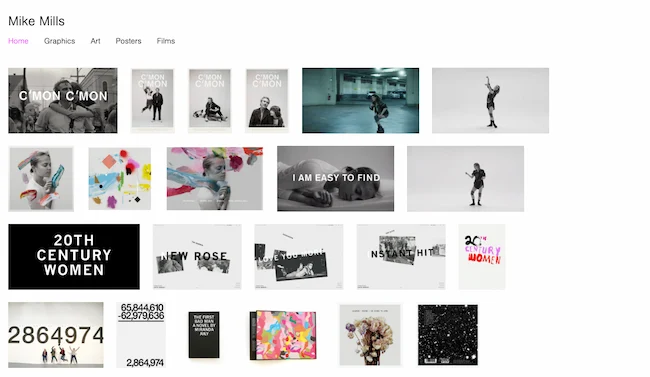
Mike Mills‘s portfolio offers a lesson in clean design with a curated selection of work spanning his career. It demonstrates the importance of editing and choosing pieces that cohesively represent one’s skills and style, even as a designer’s work evolves.
Mohamed Samir
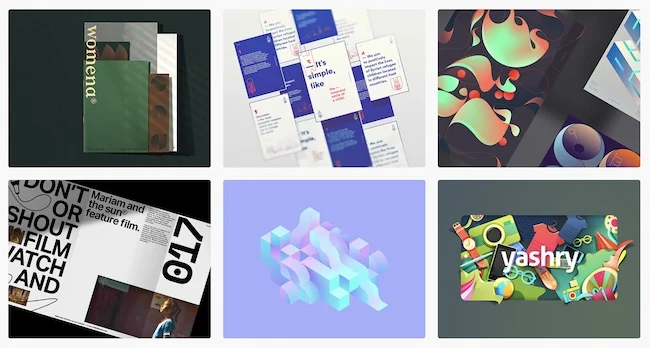
Hosted on Behance, Mohamed Samir‘s portfolio excels at showcasing a diverse range of typographic styles and design approaches.
High-quality photographs of his printed work add a tactile element, giving viewers a deeper appreciation for the finished product.
Final Thoughts: Your Graphic Design Portfolio
Your graphic design portfolio is more than just a collection of work; it’s a dynamic representation of your creativity, skill, and potential. By carefully curating your best pieces, crafting compelling descriptions, and infusing your brand, you can create a portfolio that showcases your talent and opens doors to exciting opportunities.
Read More:
How To Make Money With Canva: 10+ Simple Ways
How To Convert Canva To HTML? (2 Simple Methods)
Canva Pricing & Plans: How Much Is Canva Pro?
Contact US | ThimPress:
Website: https://thimpress.com/
Fanpage: https://www.facebook.com/ThimPress
YouTube: https://www.youtube.com/c/ThimPressDesign
Twitter (X): https://twitter.com/thimpress

